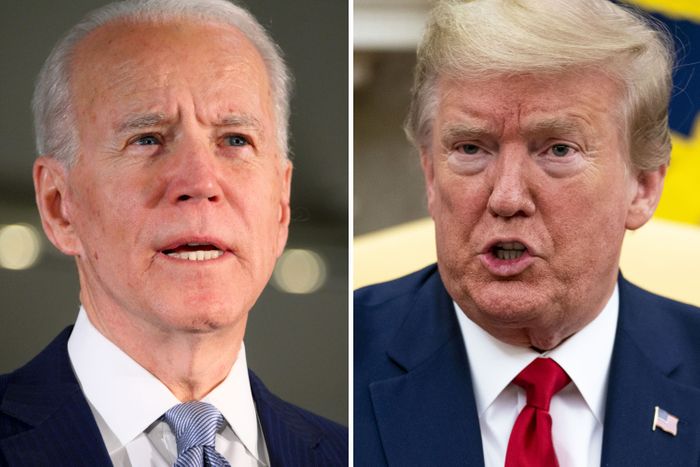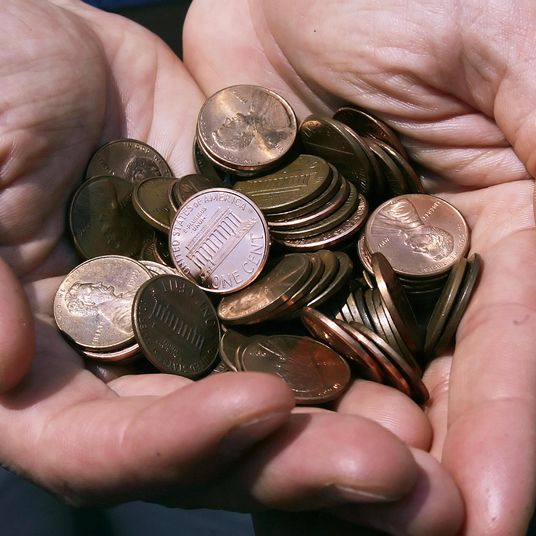
It’s been notable for a good while that in general-election trial heats, Joe Biden is doing better against Donald Trump among old folks than is customary for Democrats, who haven’t carried the senior vote (over 65) in a presidential election since 1996. The coronavirus pandemic seems to have only increased his advantage. In a January CNN poll Biden’s lead with seniors was identical to his overall lead (9 percent). In March his lead among seniors per CNN ballooned to 17 points (he led Trump overall by ten points). In April’s CNN survey he led Trump by 13 among over-65 voters, as compared to 11 points overall. And in May, Biden was ahead by 15 votes among seniors, despite having an overall lead of just five points.
Ron Brownstein offers a strong argument that seniors have been negatively affected by the coronavirus in multiple ways — not just in terms of vulnerability to the infection itself:
The combined effect of employers culling older workers first as they reduce their payrolls and older workers hesitating about returning to their jobs seems certain to stall or even reverse one of the most powerful labor-market trends over the past several decades: the increasing share of older Americans who are staying on the job, either because they want to or need to.
Federal statistics show that the labor force participation rate over recent decades has been rising significantly for older adults, even as it falls for younger cohorts. The share of Americans aged 55-64 in the labor force, for instance, jumped from 58% to 64% from 1996 through 2016, while falling from 67% to 63% for all adults over that period, the Bureau of Labor Statistics found in a study last year.
This trend has blown through the traditional retirement age: The share of adults 65-74 in the labor force increased by almost exactly half in those years, from 18% to 27%; even Americans over 75 increased their labor market presence from 5% to 8%.
So it’s not just a matter of retirees hiding in their homes and feeling enough fear to alienate them from Trump. As Brownstein points out, over-65 Americans are experiencing higher unemployment levels — 15.6 percent, in last week’s federal jobs report — than younger cohorts of workers.
In general, old folks still working are damned if they do and damned if they don’t. No wonder “only 42 percent of seniors from all races approved of either the president’s handling of the coronavirus outbreak or his overall job performance. On both counts, that was his lowest rating among any group except adults 34 and younger — traditionally the cohort most resistant to Trump.” You can see why seniors would be particularly hostile to Trump’s cheerleading for reopening the economy, which could not only create another wave of infections but might put pressure on those still in the workforce to risk their lives by going back to work.
But arguably the flip side of this dynamic could be helping Trump at the other end of the age spectrum. CNN polling shows Biden’s lead over Trump among registered voters aged 18 to 34 has dropped from 31 points in March and in April, to eight points in May — a major factor in his success in shrinking Biden’s overall lead from 15 to five points.
Looking at the numbers from another, and very important, angle, CNN tested voters in battleground states in March and in May. In March Biden led Trump among voters under the age of 50 in these states by a 54/43 margin. In May Trump led with this same category of voters by a 55/37 margin. That’s a swing of 29 net points, which fueled Trump’s improvement from a six-point deficit in March to a seven-point deficit in May among all battleground-state voters.
So if Trump and Biden are essentially trading areas of strength, who comes out ahead? Would you rather be Biden with surprising strength among seniors, or Trump with surprising strength among younger voters. Brownstein has a tentative opinion:
It’s also worth remembering since these CNN polls are of registered voters that seniors are significantly more likely to turn out than young voters. Normally Republican presidential candidates get a “bump” when pollsters switch from sampling registered voters to determining “likely” voters. But if “old reliable” voters are leaning D this year, that may not be the case.
Overlay all of these crosscurrents with the big issue of how the health and wealth of the country are doing when voters start voting early in large numbers in October, and you have another reason not to bet the farm — if you have one — on any particular outcome. This is Crazy Time.






























